Fitampoha-without the dynastic relics of King Toera
Does the Natural History Museum in Paris keep the skull of a Malagasy king killed by France in the 19th century?
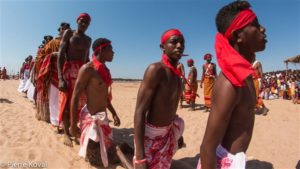
Fitampoha - the bathing ceremony of the royal relics in the Tsiribihina
It is a very special ceremony that will take place from August 12 to 19 near Belo-sur-Tsiribihina will take place in western Madagascar.
The Fitampoha, an ancient dynastic ceremony, brings together thousands of people every five years.
On the eighth and last day of the festivities will be Royal Sakalava relics taken out and put into the Tsiribihina river dipped.
But the absence of one of the relics marred the event and revived a wound: the tragedy of Ambiky.
During the attack of French colonial troops on the night of 29-30 August 1897 on the former royal capital of the Menabe King Toera (ca. 1853-1897), nicknamed Andriamilafikarivo after his death, was beheaded.

Some have concluded that he was lost forever, the descendants of King Toera will be Kamamy family, the main organizers of Fitampoha.
They are still deprived of the skull of their ancestor and the freedom to worship him, as this part of the skeleton is necessary for his relic.
Several years of research have opened new avenues that could lead to the authentication of the skull of the last independent Menabe king.
In the summer of 1897, a year after Madagascar was declared a French colony, a military campaign was launched to "pacify" the west of the island.
General Gallieni gave priority to the occupation of the Menabe. During the night of August 29-30, Commander Gerard launched a surprise attack on the royal Village Ambiky, that had laid down its arms.
It was a real massacre.

Ambiky has long been associated with the beheading of Menabe royalty, which deeply traumatized the Sakalava people.
A general uprising then ignited the Menabe. During the five-year Sakalava "rebellion" (1897-1902), the western region was particularly restless.
Human skulls as a priority
In this context of crisis led Guillaume Grandidier, son of the famous discoverer Alfred Grandidier, in the years 1898-1899 excursions through the Sakalava country.
The naturalist was allowed to follow the columns on their way through the west and southwest of the island.
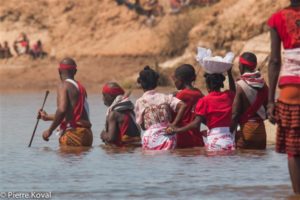
The wars of conquest facilitated the development of important (botanical, zoological and anthropological) collections of European museums.
Alfred Grandidier, who was leading a brilliant scientific career in Paris at the time, told his son which specimens to collect first, including human skulls.
Craniology, a very modern discipline at the time, required an accumulation of skulls that allowed series to be formed to create racial classifications.
In Morondava, the residence of the district commander, Guillaume Grandidier wrote to his father on May 7, 1898: "Yesterday I learned that two heads of famous sacalavas from Tsiribihina had been sent to Commander Putz," reads a letter found in the Natural History Museum.
I went to speak with the commander, who allowed me to take them, but when I dug them up, the infection was so great that I was forced to hurriedly bury them elsewhere, from where they will be exhumed next month to send me the skulls to Tulear. "
The reference to "illustrious Sakalava of the Tsiribihina" and the fact that these heads were held under the supervision of the French military chief in Morondava suggest that these two individuals were prominent political figures.
At that time, however, the main Sakalava chiefs of the Tsiribihina had been killed by the French during the Ambiky attack.
Among them, the most respected personalities were undoubtedly King Toera and Vongovongo. Eight months had elapsed between her execution and the writing of Grandidier's letter.
The two skulls of "Sakalava the Tsiribihina" were inscribed with the words "April 1898". This would be the date of their acquisition by the French military authorities in Morondava.
The transport of these skulls from Tsiribihina to Morondava was of strategic importance, as a large-scale operation to crush the "rebels" in the river region was being prepared in the late rainy season of March-April 1898.
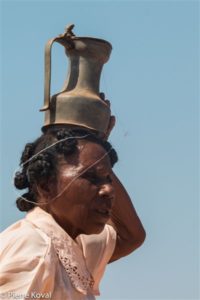
From Morondava, the two Sakalava skulls were sent by the Tsiribihina to Tulear, on the southwest coast of the island, and then shipped, perhaps via Reunion Island, to Marseilles and finally to Paris.
These skulls were inventoried among the objects included in the Department of Anthropological Collections of the Museum of Natural History in Paris in 1899, where they are kept out of public view, they are in good condition until now.
In order to determine whether one of these two Sakalava skulls from Tsiribihina could be the skull of King Toera, a request for a DNA sample was sent to the museum in June 2014 with the consent of the Kamamy family.
The museum's response is still pending.
The "Fitampoha" or bath of the royal relics today
In every region of Madagascar there is a ritual of veneration of the dead, which consists in pampering the ancestors. For the majority of Malagasy, the ancestors who reside in the afterlife are the mediators between the "Zanahary" deity and the living, so the natives give them an original place.
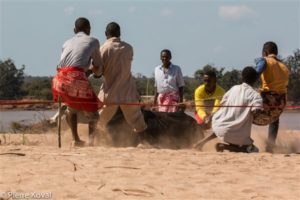
The last ritual was held in 2016, the next will be held in 2021.
That is, in the west of the island and Boeny in the northwest. This practice consists in cleaning the bones of the deceased kings who once ruled the kingdom of "Sakalava" and soak them with flavored oil and honey, with the aim of pampering the royal ancestors, showing them respect and asking for their blessings.
In the past, this ritual of veneration of the dead was practiced annually since the 17th century and was initiated by King Andriandahifotsy.
But during the colonial period, this ritual was almost forbidden and became practical only after about ten years. This rite is, of course, accompanied by traditional dress.
Key institution of the "Sakalava" kingship.
The Relic Bath is truly the key institution of the "Sakalava" Kingdom.
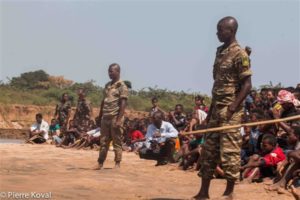
Over time, the "fitampoha" became the framework for stabilizing the lineage for each royal succession.
Despite the struggles over dynastic legitimacy, the genealogy of the "Sakalava" kings reconstructed by historians on the basis of oral traditions shows that the Menabe dynastic succession followed the rules of patrilineal preference and primogeniture.
In any case, the "fitampoha" of the third millennium is now only the place where foreign relations are recorded in relation to regional autonomy.
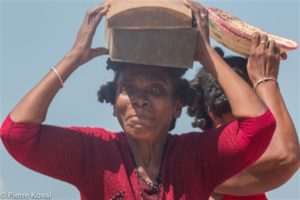
It is as if the administrative procedures could directly serve the cause of the horizontal solidarities established in the "sakalava", the "restored families", replacing the legitimacies of the ancestors.
The "Fitampoha" of the Menabe area today.
Currently, the Menabe tribe organizes this rite every five years, and in addition to the cult of the dead, the "Fitampoha" is also a great celebration.
Since its birth, this custom has always spread over seven days.
As for the days before the first week, it means the gathering of guests from all over the Menabe region as well as the inhabitants of Belo- sur- Tsiribihina.
The beginning of the ceremony is determined by a grand celebration in honor of the tribe and the celebration itself, therefore 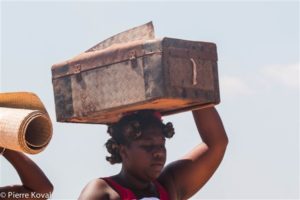
Then, on the 5th day, at this moment, the royal relics or the "papa" well preserved in the "zomba" or king's hut are brought to the island of Ampasy to be washed on the beach of Belo- sur- Tsiribihina.
The 7th day, the end, concerns the drying, the bones just washed are smeared with "zebu" oil. During the removal of the relics, the sons-in-law of the king and the woman inhabited by the spirit, those responsible for carrying the relics and those chosen for the bath are allowed to approach.
Long after drying, the bones are soaked with flavored zebu oil and returned to the king's hut, the "zomba", where they are kept.

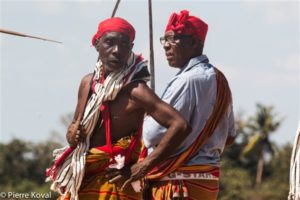





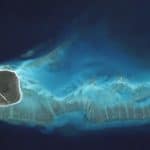

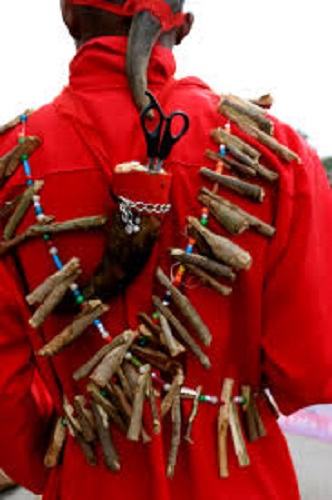

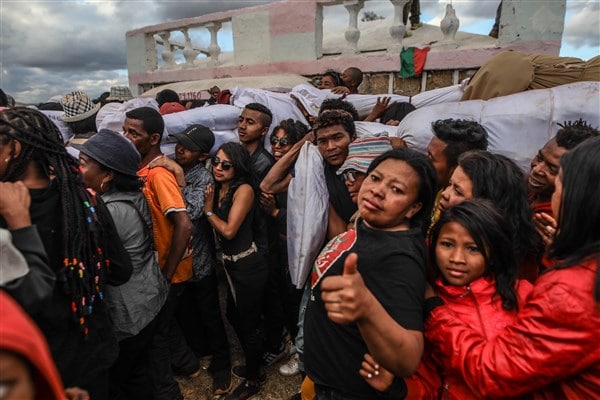
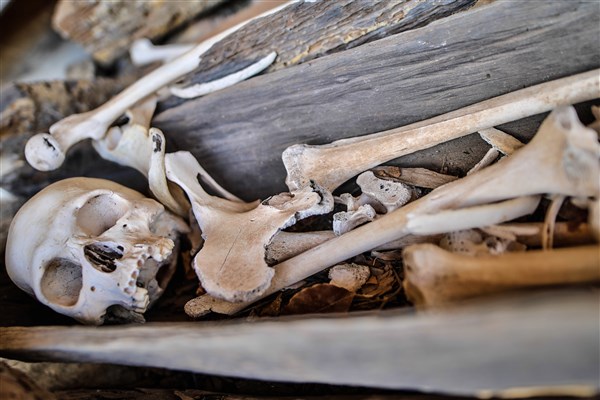





 Villa Sibylle Antananarivo (Madagascar)
Villa Sibylle Antananarivo (Madagascar)

